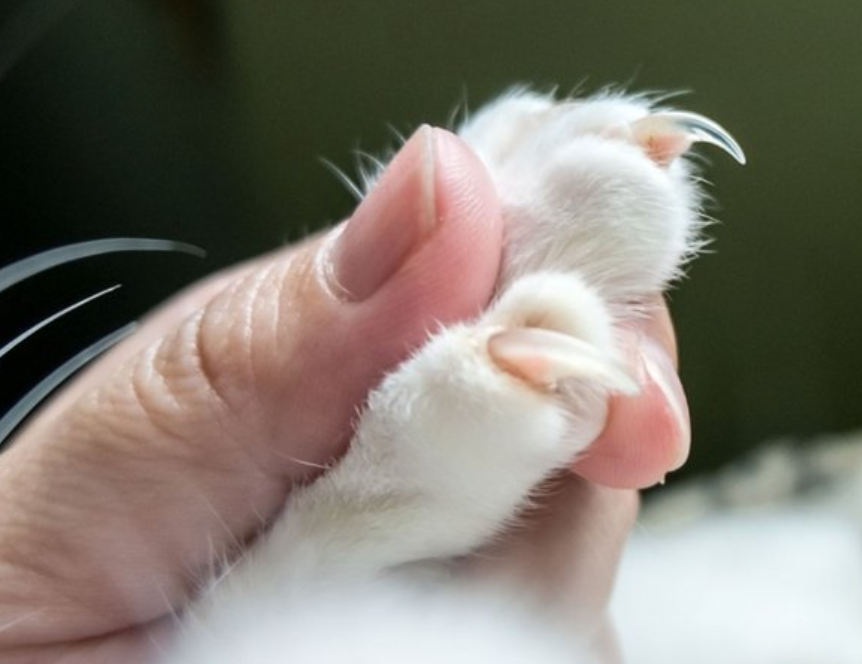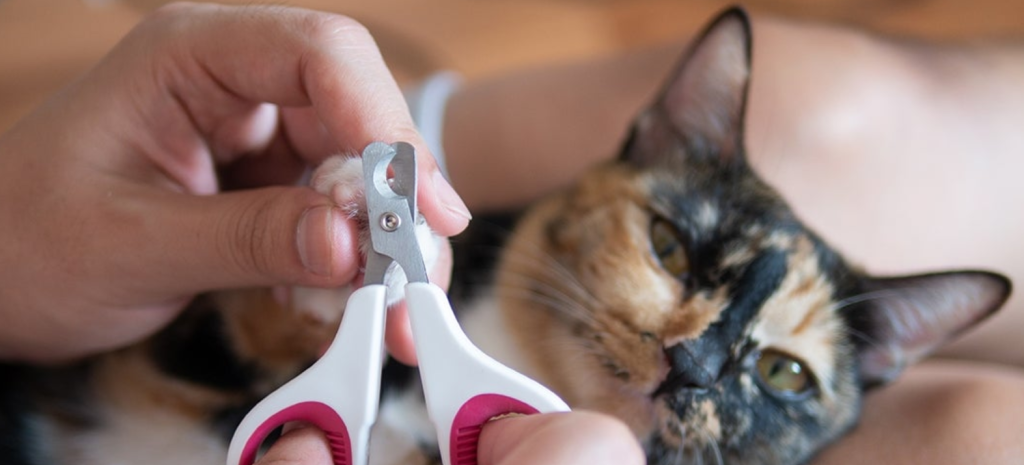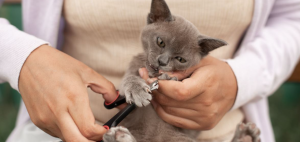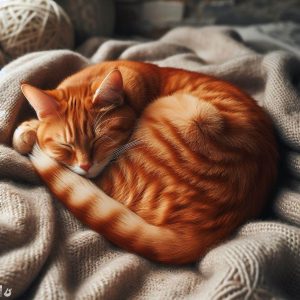Clipping your cat’s nails is an essential part of grooming and maintaining their health. However, it’s common for cats to strongly dislike, and even hate, having their nails trimmed. Why do cats hate getting their nails cut? As a responsible cat owner, it’s important to understand the reasons behind this aversion and learn techniques to make nail trims easier on both you and your feline companion.
Common Reasons Cats Dislike Nail Trims
There are several key reasons why cats often resist or struggle during nail clipping:
Sensitivity in the Nails
A cat’s nails are attached to sensitive nerve endings. Cutting too close can cause pain and discomfort, making cats associate nail trims with unpleasant experiences. Learning proper nail clipping technique is essential.
Stress and Anxiety
The restraint required and unfamiliar sensations can cause anxiety in cats. Nail trims may trigger fearful reactions and defensive aggression in stressed cats. Using positive reinforcement helps create positive associations.
Lack of Habituation
Frequent nail trims from kittenhood help cats become comfortable with the routine handling. Cats unaccustomed to nail clipping are more likely to resist as the procedure seems unfamiliar.
Dislike of Restraint
Cats prefer to be in control and can feel threatened when restrained. Holding a cat still against their will for nail trims can cause them to struggle, scratch, and bite. Proper handling techniques help reduce stress.
Overgrown Nails
Allowing nails to overgrow results in thickened and rigid nails that are more difficult to trim. Trying to quickly cut overgrown nails can splinter them and be quite painful. Regular trims are best.
Tips to Make Nail Trims Easier on Your Cat

While cats may never love nail trims, there are many ways to reduce anxiety and make the experience less unpleasant:
Start Young
Early, regular nail trims from kittenhood prevents sensitive paws and establishes good lifetime habits. Positively reinforce with treats to build trust.
Go Slowly
Work up to nail clipping gradually instead of tackling everything at once if your cat is very resistant. Even slight touches to paws at first while rewarding with treats.
Use Positive Reinforcement
Give treats, praise, and pets during and after trims to associate it with good things. This can shift nail clipping from a scary experience to a rewarding one.
Choose Treats Wisely
Use high-value, aromatic treats like Churu Puree, boiled chicken, or tuna to keep cats distracted and motivated.
Maintain Calm Energy
Cats can sense human anxiety or frustration. Stay relaxed, confident, and patient. Forced restraint increases struggles.
Do Not Punish
Yelling, scolding, or forcing cats to comply will break trust and intensify fear. React calmly even when scratched or bitten.
Avoid Restraint
Holding down unwilling cats or compressing paws causes pain and fear. Use minimal, gentle restraint only when needed for safety.
Follow the Paw
Clipping one nail at a time following your cat’s movements gives them a sense of control and avoids over-restraining.
Proper Handling
Support legs/paws properly to avoid joint pain. Position cats comfortably side-sitting with back against your abdomen.
Distract During Clipping
Engage and distract cats from the discomfort by talking, singing, or offering licks of a treat stick.
Introduce Early
Help kittens associate paw handling with good experiences by gently touching toes, separating them, and holding paws while petting or feeding treats.
Set Up a Routine
Cats feel more secure with predictable routines. Schedule regular nail trims (e.g. biweekly) so they become a familiar routine.
Use Familiar Locations
Avoid picking up and isolating cats to unfamiliar places. Do nail trims in comfortable locations the cat frequents.
Stay Relaxed Throughout
Cats sense tension. Take relaxing breaths and stay confident even if your cat struggles. Pause and regroup if needed.
Massage Relaxation Points
Gently massaging between toes, around joints, and on shoulder blades release tension and relax cats before nail trims.
Try Feline Pheromones
Plug-in diffusers with synthetic feline pheromones promote calmness. Also temporarily spray pheromones on towels placed nearby.
Use Sedatives If Needed
Discuss with your vet using mild sedatives for severely resistant cats when other techniques fail. Use only as a last resort.
Step-by-Step Guide to Clipping Your Cat’s Nails

Follow these steps for safe, low-stress nail trims:
Step 1: Gather Needed Supplies
Have clippers designed for cat nails, styptic powder, and treats handy. Also have spare towels for handling struggles.
Step 2: Pick a Calm Time
Avoid trying after stressful events or when your cat is excited/agitated. Opt for times your cat is relaxed like after eating or a play session.
Step 3: Set Up a Comfortable Space
Have your cat in a familiar place they feel safe. Avoid overly bright lights or loud noises which can be stressful.
Step 4: Provide Dose of Pheromones
Consider using synthetic feline pheromones 20-30 minutes before the nail trim to prime relaxation.
Step 5: Let Cat Settle into Position
Allow your cat to move into a comfortable position cradled in your lap or against your abdomen rather than forcing them into place. Support their back while gently cuddling their legs/paws close to their body in a natural position.
Step 6: Massage Feet Initially
Before touching nails, gently massage legs and paws while offering treats and praise to get cat accustomed to handling.
Step 7: Hold Foot and Extend Toes
Use one hand to gently yet firmly hold foot and ankle for stability. Use thumb and index finger of other hand to softly press/extend toes. Avoid pulling toes backwards.
Step 8: Locate the Quick
Look at the pink “quick” inside nail where sensitive vessels are. Only cut the sharp white tip, not the pink portion. Cutting the quick causes bleeding and pain.
Step 9: Position Clipper Properly
Keep thumb on top of foot to avoid your cat pulling away. Place clipper blade slightly in front of quick and at a 45 degree angle. Cut with confident squeeze while avoiding the quick.
Step 10: Give Treat Immediately After Cut
Reward immediately after each nail clip to reinforce positive associations.
Step 11: Continue Working in Short Bursts
Take breaks to reassure and reward your cat between nail groups. Better to trim a few nails over multiple short sessions than stress your cat by overdoing it in one long session.
Step 12: Apply Styptic If Needed
If you cut the quick, dab styptic powder on the nail tip to stop any minor bleeding. It stings briefly but prevents further issues.
Step 13: Finish with Praise and Affection
When finished, shower your cat with gentle pets, treats, and verbal praise. End the session on a very positive note so they learn to accept regular nail trims.
FAQs on Cutting a Cat’s Nails
How often should I trim my cat’s nails?
Every 2-3 weeks is ideal to keep nails smooth and prevent issues. Senior cats, kittens, and indoor cats need trims every 2 weeks. Trimming monthly works for some healthy adults.
What problems are caused by not trimming nails?
Overgrown nails curve and split, becoming painful to walk on. They also get caught on fabrics, leading to destructive scratching. Long nails can grow into paw pads if left untrimmed.
Is nail trimming safe?
Yes, regular nail trims are a safe and vital part of cat grooming. Using proper technique avoids hitting the quick. Vets can provide trims if owners are very hesitant.
Can I use human nail clippers?
No. Human nail clippers crush the nail. You need sharp, guillotine-style trimmers made specifically for cats to ensure a clean cut. Never use scissors, this can splinter nails.
Should I trim all nails at once?
No, trim only one paw at a time over a few sessions. For extremely resistant cats, even clipping 2-3 nails in a session is fine. Never force trimming all nails in one long ordeal.
What if I hit the quick and it bleeds?
It happens accidentally sometimes. Dab styptic powder to quickly stop bleeding. Discourage licking and monitor for infection. Keep the trim very short next time to allow quick to recede.
Conclusion
Regular nail trims keep your cat healthy, prevent destructive scratching, and avoid injuries from getting snagged. Why do cats hate getting their nails cut? While many cats dislike paw handling, using patience along with positive reinforcement and relaxation techniques means trims don’t have to be traumatic.
Consistency, confidence, and a gentle approach make nail care far less stressful for both you and your beloved feline.




